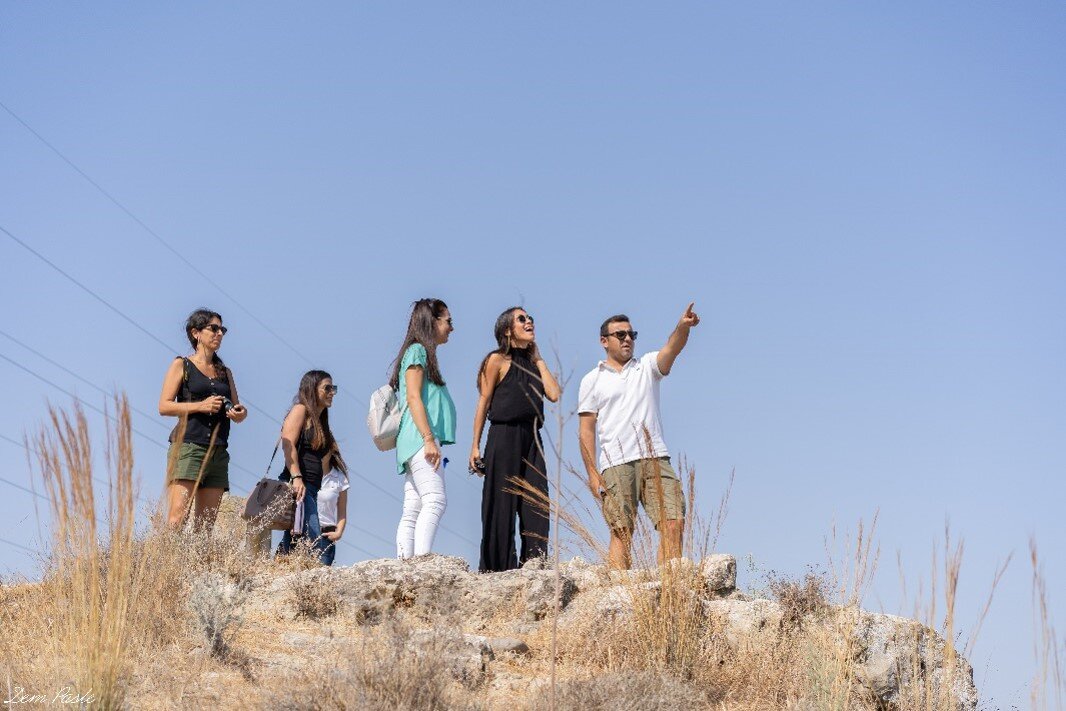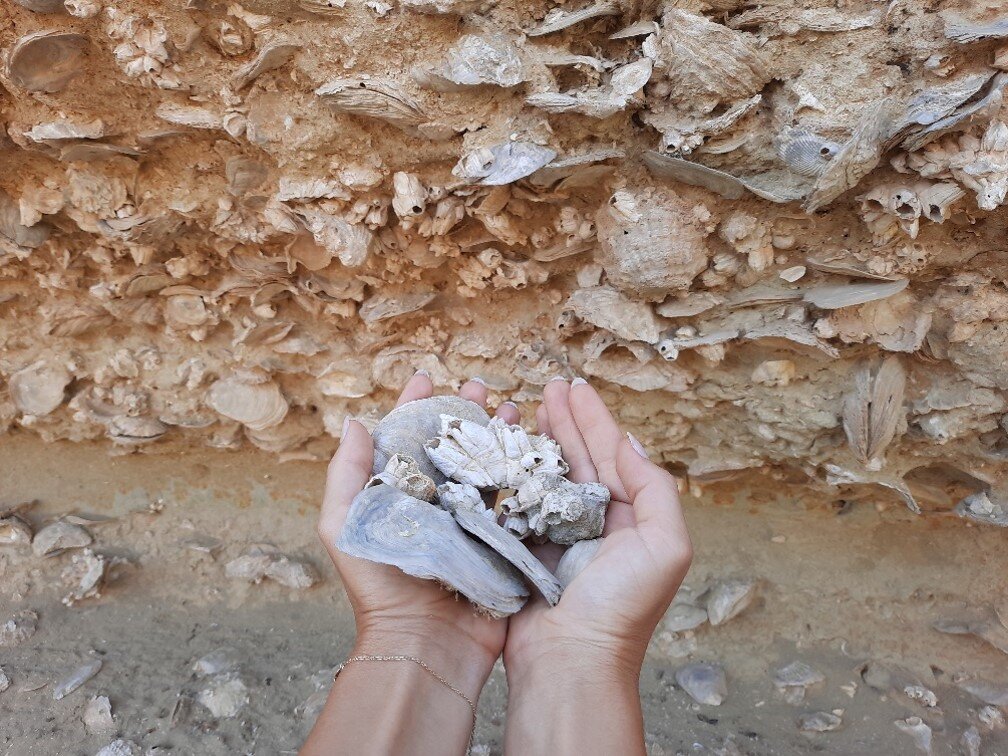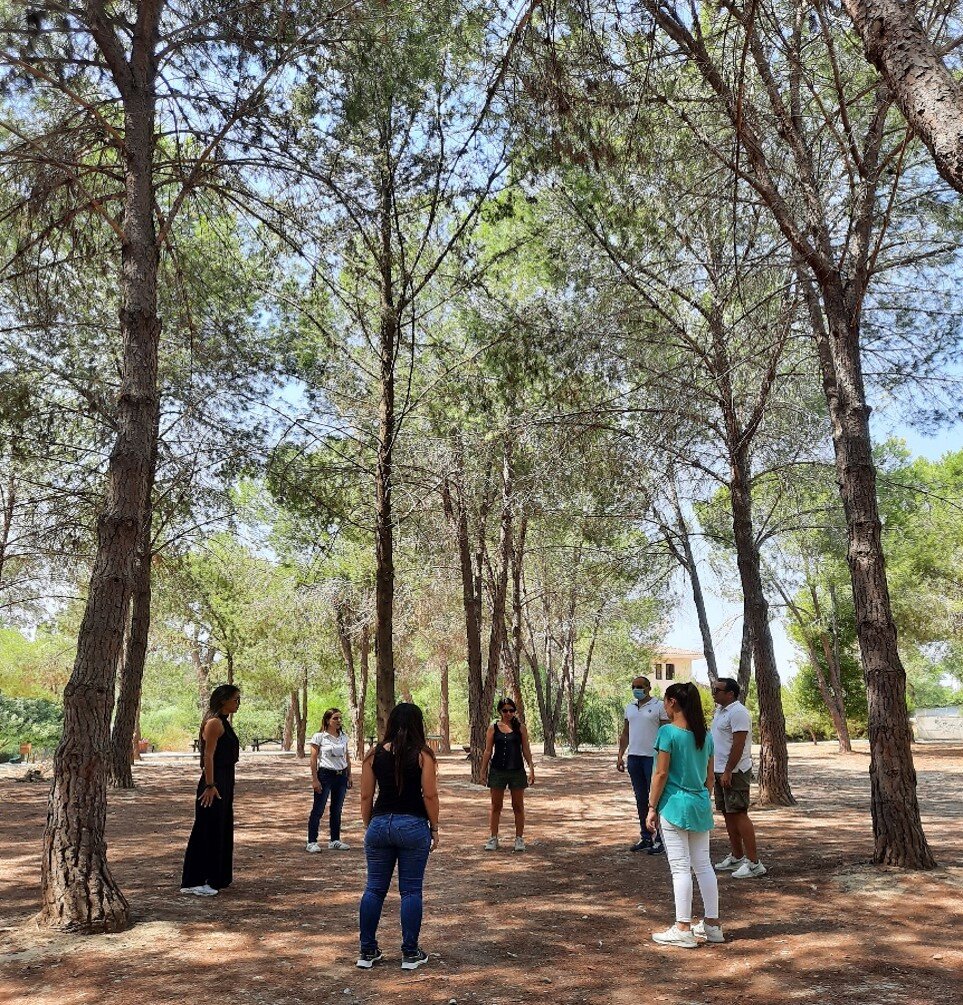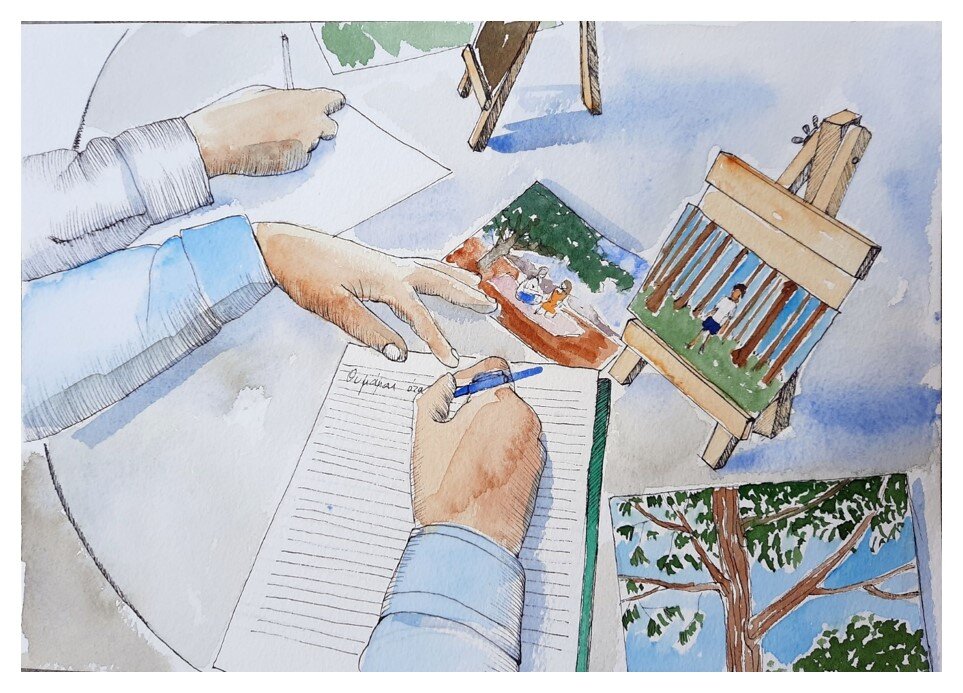Nicosia:
A Series of ‘Un|Lockings’
In September 2020, we had the opportunity to be in Nicosia to work with Connecting Nature partners ANEL (Nicosia Development Agency) to deliver The Sarajevo Process. In the lead up to the workshop in September, Paulina worked with Eleni in ANEL to co-produce the agenda; in addition to the memory work, immersion in nature/eco-therapy and body-mapping elements, the agenda was expanded to include a new activity - ‘map art’ - to fit with the co-creative ideas of the core team that would be participating in the workshop. The participants were the close group of 6 colleagues that form the ANEL office; 4 women, 2 men. In addition to the facilitator (Paulina), two additional members joined the group: an illustrator, and a film-maker, both there to record, in artistic ways, the process. The role of art was an element that we wanted to further explore as part of The Process - to assess the way in which creativity and creative activity (as we first observed in Sarajevo) could be harnessed to foster trust, empathy, and connection. Furthermore, we wanted to learn what role art had, in bringing all the elements of the process together, and in helping participants build their story of nature. Over the course of three days, participants were guided through a tour of the city as well as a tour through the past, present and future. The co-created outcomes speak of a necessity to return to nature and to bring nature back into the daily lives of city dwellers. What follows is a report of the 3-day workshop.



Day 1: Un|Locking the Past (Memory Work)
Format: The first day of the process took place in the office. Participants did not know what to expect; all they knew was that, for the next 3 days “there would be something different”. Eleni noted that she did not want to explain the exercise to participants in advance; she felt keeping it ‘secret’ would allow them to better experience the exercise ‘in the moment’ and in that way, the exercise would generate more meaningful results. Everyone was asked to bring along pictures of themselves in nature. Most opted for their far past, memories of camping in the mountains, summer holidays, playing as children. One participant brought a picture of her children in the Athalassa park- automatically linking the exemplar to the exercise.
Reflection: The memory work exercise allowed the participants to see that they all had ‘common memories’ of nature. The activity, the sharing of memories between them, allowed them to chat, and to bond over their stories. Eleni shared that the memory work exercise allowed everyone to see their relationship with nature more clearly: “our past relationship with nature was tighter; we understood the significant role that nature had in our lives; this relationship is not as tight as it used to be….we need to ‘refresh’ this relationship’. Lefteri added that, for their exemplar, “with small things, we can bring nature, and can bring it back into our lives; we’ve lost things with modernization…we just need to put it in practice, that is all…it gives us the boost for what we our doing with our exemplar as part of Connecting Nature – the value of the green network to connect green spaces in the city, will improve the quality of life.
Un | Lockings: Un | Locking #1 - The past was closer to nature than the present. As current generations grow away from nature and have less memories and connections to it, they will raise children who care less and less about it. Therefore, we are the last generation which can do something about it, and reinstate nature in the memories of future generations. Un | Locking #2 - Urbanization drew people away from nature but current trends of planting and returning to nature, and particularly during COVID as escape or exercise is important. Un | Locking #3 - the cultural connotation of nature and interactions with it as ‘villagey’ (unmodern, peasant, old-fashioned) is being destroyed during COVID-19, as people spend more time in green spaces.
Day 2: Un | Locking the Present (Immersion in Nature, Eco-Therapy, and Body-Mapping)
Delivering the process with Nicosia in September 2020 coincided with a heatwave; despite the heat, the group remained excited about spending at least one of the tree days of the process outside. The discussions while driving to the Kakkaristra gorge (the first site for the day’s activities) were informative and reflexive, and revolved largely around Cypriot culture and uses of nature. In Athalassa park, where the exemplar is focused and also part of the day’s activities, two human-made lakes form two of the largest blue spaces within the city. The lakes are important for bio-diversity and can be enjoyed by Nicosians, but only at a distance. This lack of contact with water is also an effect of droughts and lack of blue-space infrastructure such as fountains, ponds and public lakes.
Here, the group are walking towards the gorge to begin their immersion-in-nature for the day. The photos capturing the group during the day are paired with a few illustrations. Inviting an illustrator to join the group provides an opportunity to demonstrate the relationship between art - creativity and creative activity - and nature which we aim to foster with The Sarajevo Process.






Format: Athalassa forest park was the final destination of the day, where many of the process’ activities would take place. In the illustration above you can see everyone forming a large circle and Paulina led them through a short mediation - everyone was invited to take deep breaths and think of their surroundings, use their senses to absorb every feeling and clear their heads.
Reflections: Following the meditation everyone went ahead and walked about in silence, used their bodies to interact with nature more consciously and collected materials for their body maps. It was a moment of creativity and bonding, which the participants appeared to enjoy. People were surprised at the results of their own work as they complemented each other at the end. The long wooden picnic tables provided a communal feeling of sharing this creative moment.
Reflection: After about an hour, Eleni hung a string across two trees. She had brought along small clothes picks and each person began to hang their artwork in line. This provided a beautiful view of art being displayed in the space where it was created, and in the space that inspired it. Everyone was invited to say a few words about their work, where they had drawn inspiration and what it was showing.
Un | Lockings: Un | Locking #1: Doing art in Athalassa park – there is a potential here to connect everything back to the framework and to the Nicosia exemplar. Un| Locking #2: Time and Place - leaving the office, and spending time in nature, allowed everyone to ‘unlock’ and have time to complete the exercise. The importance of time, and of running the workshop over the course of three days was highlighted as important as it gave the participants a chance to reflect on their experiences, and to express them more deeply. Un | Locking #3: Art and nature as a way to foster human-nature co-production - the process of bringing the body maps together and photographing them gave weight to the importance of the task. This was an experience worth remembering, and the artwork was worth considering and protecting. This validation was important, especially for people who see themselves as non-artists. The colours used to express feelings and emotions stood out within the natural background, while the natural materials blended in- it was a human-nature co-production. To see everything come together within a natural space was a reimagining of the relationship between humans and nature.
Day 3: Un | Locking the Future (Making a New Map for Nicosia - Creative Inquiry)
Format: In relation to the third day, and the map art – this element of the process was put forward by the team in Nicosia as the frame for thinking about the future; both Eleni and Lefteri said this exercise brought everything together perfectly; the illustrator which accompanied the participants during the three days also suggested using transparencies of the body maps completed the previous day, to add a ‘human element’ to the map – drawing in the senses – and this served to bring everything together, across the three days.
Reflection: The inter-play between creativity and creative activity demonstrates the meaningfulness of incorporating art into The Sarajevo Process. We will continue to consider the way in which these two elements - creativity and creative activity - support our understanding of and connection with nature. Furthermore, refining the overall methodology to include creative inquiry (especially as it related to considering the future) will serve to strengthen the role of art and applying an arts-based approach for story-making and narrative development.
Un | Lockings: Un | Locking #1 - Links between the past, present, and future: There were obvious links between the memory-work and the body maps that had not been obvious at the time on day 1 and 2- the past has been unlocked in a way where the present became a more reflexive experience in nature. Un | Locking #2 - Arts-based approach to support meaningful co-production: Both Eleni and Lefteri noted that the illustrator that was part of the group was very helpful; she wanted to participate actively, and be part of the team. She played a key role in helping the participants ‘move past’ their blockages with the artistic elements of the process and showed them how to use the materials. She also brought material collected from the previous day in the park, and showed the participants ways in which these could be used. The artist was very encouraging – Eleni noted that she took ‘the initiative to show us how to express ourselves and incorporate into the design. Lefteri shared that the ‘artist, she saw some skill in me; I did not know that about myself.’
Next Steps
We will continue to work with Nicosia in the coming months and apply the outcomes from The Sarajevo Process to support the development and implementation of their Nature-Based Solution. Furthermore, we will share the final film (currently being edited) of the September 2020 workshop. Finally, we are working with the team in Nicosia to curate an exhibition of all the creative outputs from the process - to share the story with citizens, and to showcase the power of art to connect and create trust, all the while building a meaningful story of nature in Nicosia.




